To ride on flat roads, the best bike gear to use is the middle gear because it reduces the pressure of your feet on the pedals. According to riders, this one allows for comfortable pedaling.
If you want to ride on flat terrain, it’s best to try out the most comfortable gear for you. Every rider has their preference on what gear is most comfortable for them.
Ultimately, it’s the rider’s job to choose the bike gear they would use on flat roads. However, we’re here to point the rider in the right direction.
In this article, we’ll talk about the different types of gears, the ideal gear ratio for flat roads, and the best gear to use on flat roads.
We want you to be able to find the best gear that works for you.
Quick Navigation
Types of Bikes Gears
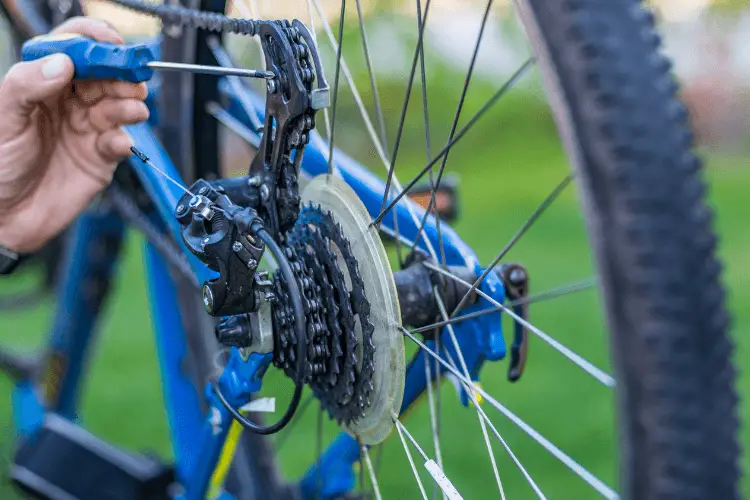
There are three types of gear for bikes. They include the low gear, the middle gear, and the high gear. You can experiment with these gears to find what works for you.
1. Low Gear
The low gear is the best for climbing. To put the bike in low gear, combine the larger rear cogs and the smaller chainrings. You can use this gear best in riding uphill and in headwinds.
The low gear will keep the pedals turning when there are sharp turns on the ride. You can climb short distance peaks without too much force using this gear.
2. Middle Gear
On regular terrain, the middle gear is the best option. It works best when you need strength to pedal but not much for wobbly roads.
Combine the triple rear cogs and the middle chainrings to activate this gear. We advise beginners to start with their bikes in middle gear.
While practicing in the middle gear, you can then learn what gear works best for you. This will encourage you to try other gears freely.
3. High Gear
Riding in high gear is best when you want to master speed. The high gear also works for accelerating uphill and coming down.
To activate the high gear, with minimal input from the throttle, you can combine the smaller rear cogs and the large chainrings. This would give you more speed for every stroke.
Your bike might have different speed limits, which increases the number of gears a bicycle can have. The bike pedal comes with 2 or 3 chainrings that change how you shift the gears.
Why Does Your Bike Have Gears?
Gears help us maintain a comfortable pedaling speed regardless of the gradient or terrain, which is something that no single gear can achieve.
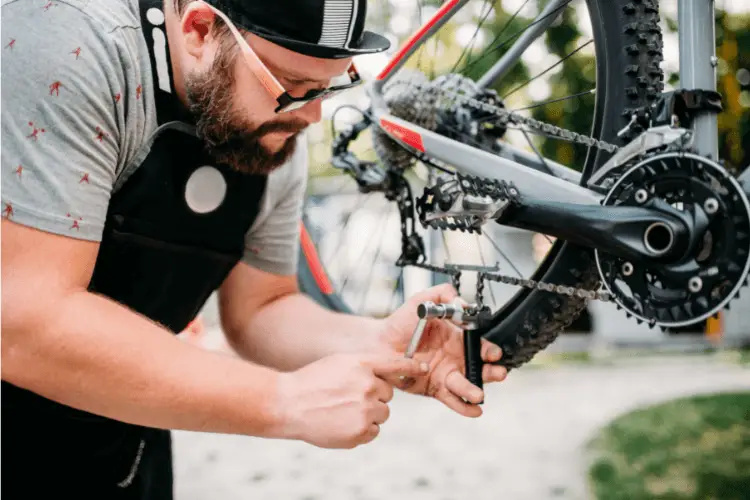
With gears, you can find your most comfortable and efficient speed. Different riders have different pedaling speeds, but most prefer 90RPMs.
When you start learning how to ride, you should switch to low gear when moving uphill, as this will allow you to pedal even if you face difficult terrain.
You can change to the high gear when coming downhill to make pedaling easier. You will experience a sudden increase in speed with this gear.
Riding on flat roads can be a different case. You would want comfortable and friendly pedaling.
What Bike Gears To Use on Flat Roads?
The middle bike gear is the best gear to use on flat roads. Many riders recommend this choice because it reduces pressure on the pedals and helps maintain the ride at a smooth pace.

The easiest way to find which gear to use on flat roads is simply to use the gear that allows you to pedal comfortably.
We mean that if you’re riding on a flat road and find it hard to stroke the pedal, you can shift to an easier gear to find more comfort in pedaling.
Alternatively, you can shift to a harder gear if your legs aren’t getting enough resistance and you’re not traveling very far to give your bike more speed and resistance.
Choose an easier gear if you’re feeling tired. Choosing harder gear will allow you to go faster. If you’re unsure which gear and gear ratio works best for you, don’t be afraid to experiment.
How To Use Bike Gears?
Here is a guide on using gears on all bikes with traditional drivetrains with different front chainrings.
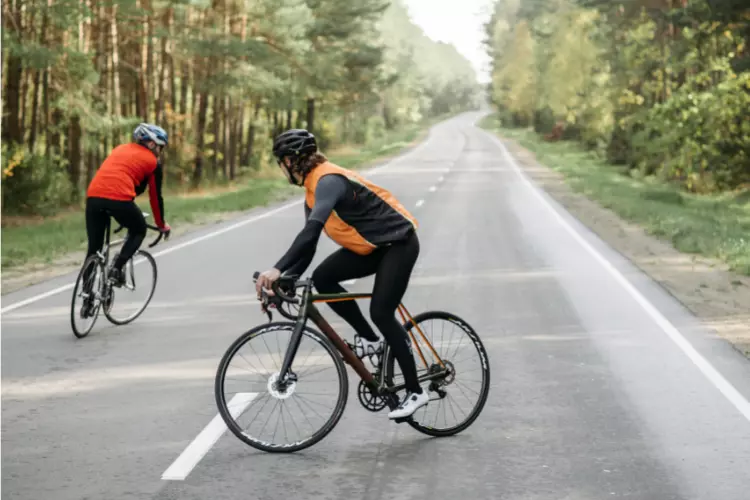
To shift the chain on the front chainring
You must change gears with the left-hand shifter. To change the gear and vary the difficulty and easiness of the pedal,
You can start with the middle gear if your bike has three chainrings and change up or down depending on your need. If it has two chainrings, start with your chain on either of them.
To pedal much more easily, move the chain to the smallest front chain, especially when climbing hills.
To make pedaling difficult, especially traveling downhill, shift the gear to the largest chainring.
To move the chain on the rear cassette
Use the right-hand shifter and make these adjustments to feel the effect of the gear.
To make pedaling easier, move your chain to the larger cogs, especially while climbing.
To pedal harder, move your chain to the smaller cogs. This should happen while you’re descending.
You might wonder how you can have all this information stored in your memory. Well, you have to practice regularly until you have memorized which shifters to use.
Ideal Gear Ratio For Flat Roads
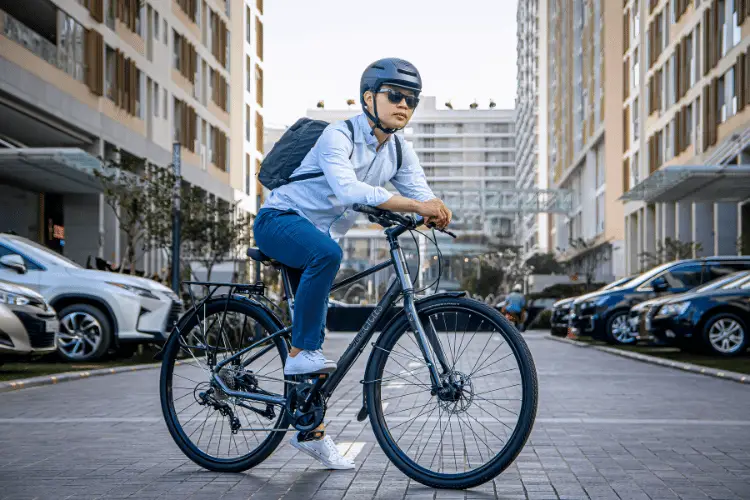
When you want to figure out the ideal gear ratio, you have to consider several factors, including preference, leg strength, elevation, etc.
Using a low gear ratio will cause your legs to move at an extremely high speed on hilly terrain. If your gear ratio is too high, you might want to take your bike to a steep height to make it easy to pedal.
As a beginner, the ideal gear ratio is from 2.7 to 2.8. At the same time, it can increase from 2.7 to 3.0 when you have mastered how to ride on a flat road.
When you have mastered the ride, this can enable you to determine your gear ratio better, and you will know if it needs a readjustment.
Are Gear Ratios The Same For Everybody?
No. They are different for each bike rider, and each rider gets to choose their ratios after they have ridden their bike for a reasonable time.
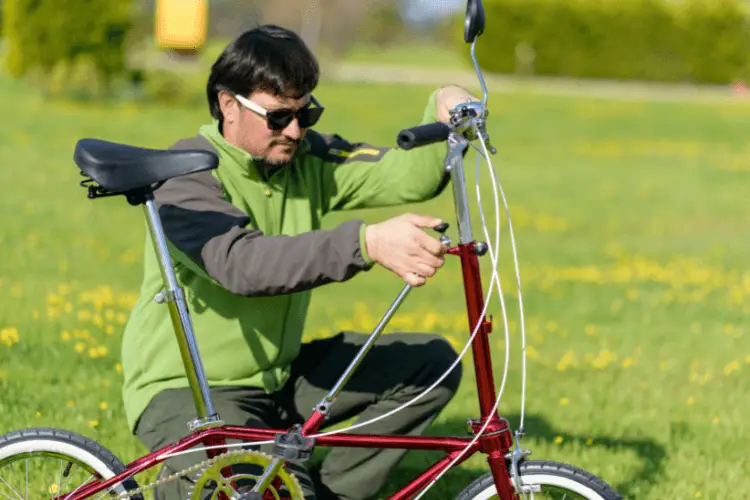
In the same way, every bike is different, that’s how it is with gear ratios. Every biker has a unique ratio which is based on preference.
Your personal preference will determine the ratio you select. As a beginner, you’re under no pressure to select your gear ratio.
You can do that with time when your preference and gear ratio changes as you gain more muscles.
What Bike Gear To Use On Flat Roads – FAQ
Conclusion
We have listed the various gears available and they are affected by different factors that should help you decide your preferred gear on flat roads.
These factors include ride type, weight, height, etc. Weighing up these factors will help you decide the right gear to use on your trips.
We have shared how to make the gear work so with constant ride practice, you should come to terms with the gear and memorize how it works.

1 thought on “What Bike Gear To Use On Flat Roads? (Ultimate Guide)”